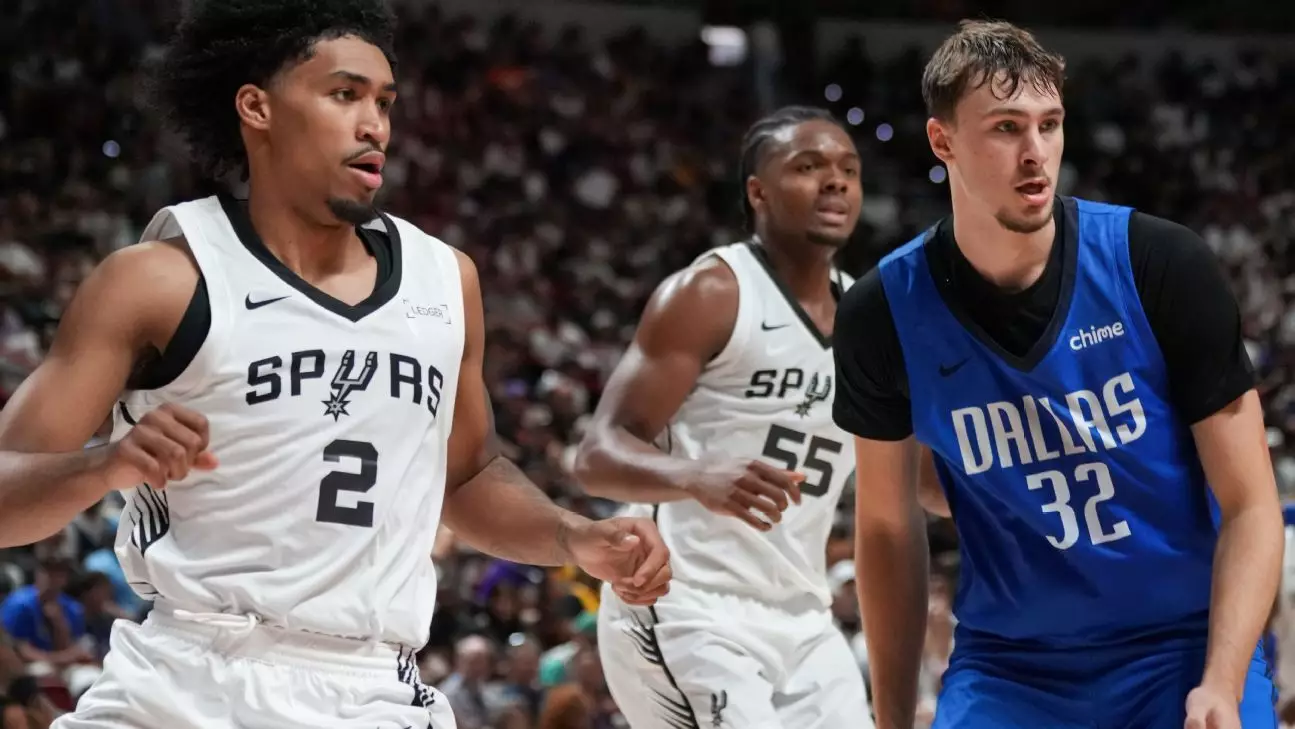The recent showdown between the top two prospects of the 2025 NBA draft is more than just a spectacle; it’s a disturbing harbinger of the league’s uncertain trajectory. While fans and media fixate on the highlight-reel dunks and individual brilliance, beneath the surface lies a troubling reality—one that questions whether the NBA is prepared for a future that may be dominated by an untested and potentially unstable generation of players. Instead of inspiring confidence, this recent summer league clash raises critical questions about development, mental resilience, and the league’s capacity to foster genuinely well-rounded athletes.
The performances of Cooper Flagg and Dylan Harper were undoubtedly impressive on paper. Flagg, the No. 1 pick, scored 31 points with electrifying dunks and drew praise for his aggressive mindset. Harper’s comeback, with a promising 16 points in just 20 minutes, signaled resilience and potential. But these individual achievements should not obscure the broader, more troubling implications. The spectacle was full of excitement, but it also revealed a league that is increasingly driven by hype and fleeting moments of brilliance, rather than sustainable growth and maturity among its young stars.
This apparent focus on highlight moments and individual stats masks significant concerns about the psychological and developmental readiness of these players. Flagg’s early struggles with free throws and Harper’s brief exposure to intense pressure highlight something more insidious—an environment that encourages flash over substance, where raw talent is mistaken for readiness. The NBA’s reliance on summer league performances as the primary gauge of future success risks fostering a false sense of security: a narrative that promise equals preparedness, when the reality is often quite different.
Furthermore, the league’s current developmental approach too often favors short-term spectacle at the expense of long-term athlete well-being. The thrill of showing off athleticism and creating buzz appears to overshadow the crafting of disciplined, mentally resilient players prepared for the multifaceted challenges of professional basketball. Harper’s impressive blocks and harrowing drives shouldn’t distract us from the truth that these athletes are still raw, experimental prospects navigating a high-pressure environment before their skills are fully honed—or their mental toughness is truly tested.
In light of this, the NBA must critically reassess its priorities. The league’s future depends not merely on star-power and eye-catching plays, but on cultivating players capable of enduring adversity, handling scrutiny, and developing consistency. Relying heavily on summer league for insight is a risky gamble; it often rewards players for momentary brilliance rather than their ability to sustain high-level performance over years. If the league continues down this path, it risks producing a generation of stars who are spectacular in flashes but fragile when it matters most.
The recent performances also shine a spotlight on the broader cultural issues at play. Young athletes today are subjected to immense pressure from a young age, often shaped by social media and the relentless scrutiny of fans and analysts. The NBA, as a league that promotes itself globally and leverages star narratives, bears responsibility for fostering environments that prioritize mental health, resilience, and holistic development. The future stars may shine brightly in summer league and highlight reels, but without comprehensive support systems and a focus on mental toughness, many will struggle once they face real adversity—be it injuries, slumps, or off-court distractions.
Critically, this scenario underscores a larger systemic failure—an overemphasis on immediate impact rather than sustainable growth. The league must embrace a more nuanced approach that values patience and process. Investing in comprehensive development programs, mental health resources, and mentorship can help shape not just skilled players but mature individuals capable of handling the pressures of NBA stardom. This pivot requires a shift away from the juvenile fascination with highlight moments towards fostering a culture that prioritizes resilience, adaptability, and intelligence.
Finally, the spectacle of rising talents like Flagg and Harper, while exhilarating, should serve as a wake-up call. The NBA’s sustainability hinges on more than just promoting hype; it depends on nurturing genuine talent with staying power. If the league neglects this crucial aspect, it risks diluting its own credibility and jeopardizing the integrity of its global product. The future of the NBA isn’t in highlight-reel plays alone; it lies in developing players who can withstand the storm, stay humble, and lead with purpose. Only then can the league truly innovate and secure a lasting legacy that transcends fleeting moments of brilliance.

